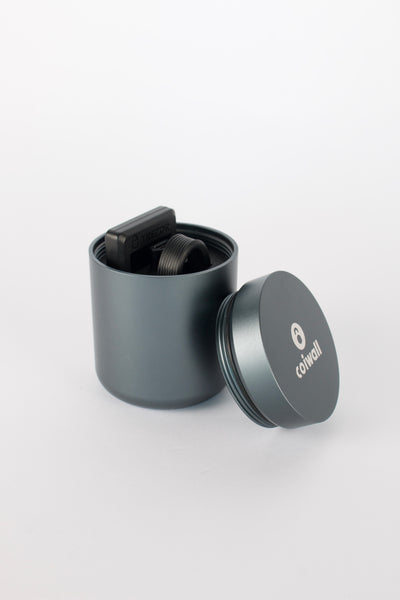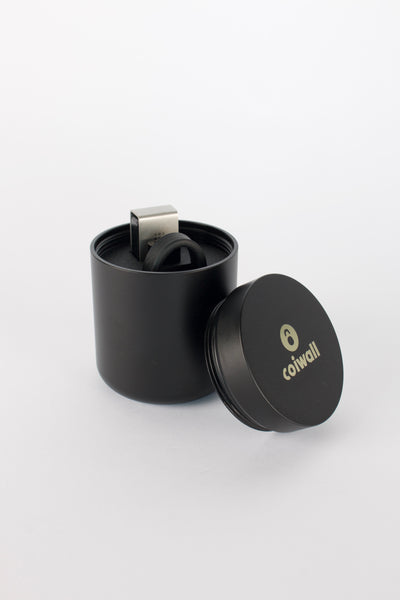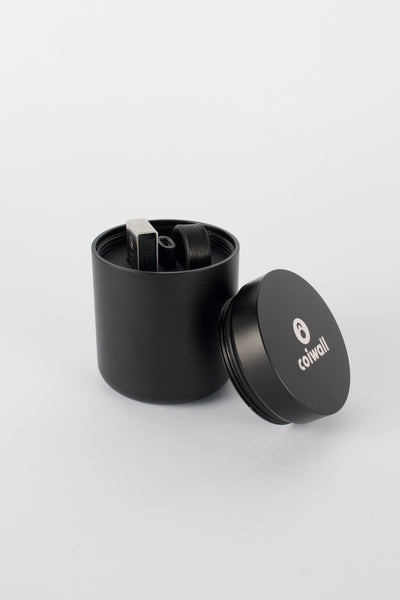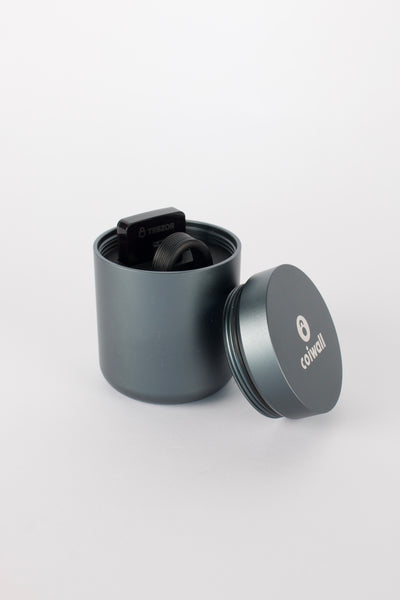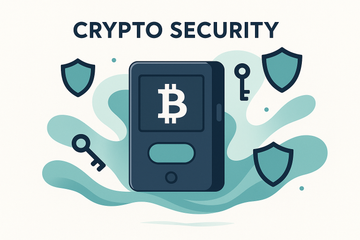Crypto can feel loud. Prices swing, apps update, and a dozen tabs stare you down. But there is a simple habit that brings steady calm to the chaos. Hold your own keys. A small device on your desk or in a drawer shifts risk away from hacks and fake pop-ups. It gives you something solid. You can touch it, you can see it, and you can sleep a little better.
That small device is a hardware wallet. And yes, it is worth the hype. Let me explain why people who care about coins, NFTs, or stablecoins keep coming back to the same lesson. Self-custody wins over time.
So, what does a hardware wallet actually do?
It stores your private keys offline. That is the whole trick. Your keys never leave the device. When you send a transaction, the unsigned data goes to the wallet, the wallet signs it inside the secure chip, then it returns a signed transaction to your app. Your computer or phone does the networking, not the key work. The secret stays secret.
Think of it like a pen that only writes your name when you press a button. No one else can make it sign. Malware can bark at it, but it cannot force the move. That single barrier removes most of the risk that plagues hot wallets.
Ledger or Trezor, and why people care
You will hear two names again and again. Ledger and Trezor. Ledger has the Nano S Plus and Nano X, with a polished app called Ledger Live. Trezor has the Model T and the Safe 3, with Trezor Suite on desktop. Both protect keys offline. Both support major coins. Both can pair with MetaMask or WalletConnect when you want to use DeFi. The feel is different, the apps are different, but the core idea is the same.
Ledger leans on a secure element chip and a smooth user experience. The screens are clear, the buttons feel nice, and Live manages a lot in one place, like swaps or staking for certain assets. Trezor leans into transparency and clear prompts. The Model T has a touch screen. Trezor Suite is clean and helpful, with a simple flow for sending and receiving. Many folks like that Trezor firmware is open source. Some prefer Ledger’s security chips and broad token support. Reasonable people disagree. You know what? That is fine. The point is that both work and both earn trust from millions.
Hot wallets, cold wallets, and the trade you make
Hot wallets like MetaMask are fast and handy. They live on your device and connect to dapps in a blink. But they ride on the same system that runs your browser, and the web loves tricks. Phishing links, fake approvals, and sneaky pop-ups happen every day.
Cold wallets slow you down a little, by design. You must confirm on the device. You must read the screen. That small pause saves many tears. Some users keep a hot wallet for play money and a hardware wallet for savings. That mix feels human. Quick when you need to try something, careful when you need to be safe.
How a transaction flows, without the mystery
- You create a transaction in your app. Maybe you are sending ETH or signing a swap.
- Your app passes the details to the hardware wallet over USB or Bluetooth.
- The wallet shows what you are about to do. You check the address and amount.
- You press the buttons to approve. The private key signs inside the device.
- The signed transaction goes back to the app, then out to the network.
That is it. No magic, just clean separation. The key never touched your laptop or your phone.
Choosing a wallet that fits you
There is no single winner for everyone. Instead, match your habits.
- Budget and form: Ledger Nano S Plus is affordable and sturdy. Trezor Safe 3 keeps things simple with a clear screen and a modern chip. If you want a touch screen, Trezor Model T is nice.
- App feel: Ledger Live is an all-in-one. Trezor Suite is focused and calm. Both pair with MetaMask for EVM use.
- Coin support: If you hold a wide mix, check the list first. Most big chains are covered.
- Open or closed components: Some prefer more open designs. Others value secure elements. This choice is personal and valid.
If you store larger sums, consider advanced setups. Coldcard, BitBox02, and Keystone also serve serious users well. Multi-sig with services like Casa or Unchained adds another layer. But start simple. Earn habits before stacking complexity.
The seed phrase is the real crown
The device is the door, the seed phrase is the deed to the house. During setup, your wallet shows 12 or 24 words. That phrase can recreate your keys on a new device. Anyone who sees it can take your funds. So write it on paper, not on your phone, and keep it out of sight. Better yet, stamp it into metal with tools like Cryptosteel or Billfodl to resist water and fire.
A passphrase adds a hidden layer. It is like a secret room behind the main room. Without the passphrase, the base 24 words show one set of accounts. With it, you get a second set. Use a passphrase only if you can remember it or store it safely. Forget the passphrase, and recovery gets messy fast.
Shamir and shared recovery
Some Trezor models support splitting a seed into several parts, so you need a few pieces to recover. This helps with theft and loss, but it also adds rules to your life. If you love puzzles and backups, it can work. If you misplace paperwork, keep it simple for now.
Common mistakes that bite fast
- Typing your seed on a computer: Never do this. Only enter words on the device, or on a fresh device during recovery.
- Not matching addresses: Always compare the address on the device screen to the one in your app. One digit off is not fine.
- Firmware from the wrong link: Update through the official app only. Bookmark the real sites.
- Buying from sketchy sellers: Get hardware wallets from the official store or trusted partners, sealed and new.
- Blind signing all the things: If the prompt looks odd, stop. Research the contract or send a small test first.
Using DeFi, NFTs, and staking without losing your cool
Here is the thing. You can enjoy DeFi from a hardware wallet. Connect Ledger or Trezor to MetaMask, then use WalletConnect with your favorite app. Confirm every move on the device. The wallet will not explain every smart contract in plain words, so learn the common patterns. Send a tiny amount first. If the first step works, the rest follows.
For NFTs, verify the marketplace and the collection contract. Do not sign random airdrop claims. For staking, many coins support it through Ledger Live or through native tools. When an app asks for broad permissions for all tokens, take a breath. Narrow approvals are safer. Revoke old ones with tools like Etherscan’s token approval checker when you are done.
Travel, moving, and real life mess
Life happens. You move apartments. You visit family. You forget which drawer holds the seed. Make a map for yourself. Two safe locations beat one clever hiding spot that you later forget. If you travel, consider bringing a small balance on a hot wallet and leaving the main stash at home. A fresh hardware wallet can be delivered to you later if needed, then you recover with your words.
Some folks like a decoy account with a small balance. Some add a passphrase as a quiet layer. Keep your story simple enough that you will follow it when you are tired or stressed. Security that fits your life is the security you will keep.
Trends worth watching without the hype
Multi-sig is getting easier. More wallets support simple flows with two or three keys across devices and services. Inheritance planning is also getting better, with clear guides and tools to pass assets without exposing seeds too early. And yes, consumer devices are improving. Brighter screens, safer chips, clearer prompts. Nothing flashy, just steady steps that help regular people.
There are debates about phone secure enclaves, social recovery, and cloud backups. They can help in some cases, and they can add new risks. If you go that route, read the fine print and test recovery before you need it. A weekend test beats a midnight panic.
A quick setup checklist, then you are off
- Buy the device from the official shop.
- Set up on a clean computer in a calm space.
- Write the seed words clearly. Read them out loud to yourself, then store them away.
- Set a strong PIN. Not your birthday. Not 1234.
- Update firmware through the official app.
- Send a small amount first. Recover on a spare device later as a practice run if you can.
Final thought, and a small nudge
Owning your keys is a quiet habit. It does not show off. It does not make headlines. But it keeps value where it belongs. Whether you pick Ledger for the sleek app, or Trezor for the open spirit, you get the same peace. Your coins move only when you say so. Honestly, that feeling is hard to beat.
You do not need to become a security engineer. You just need a little patience, a small device, and a plan you can follow. Start with what you hold now. Move a little. Test. Learn. Then move a bit more. One day you will notice the noise got softer, and your hands feel steady on the keys.

